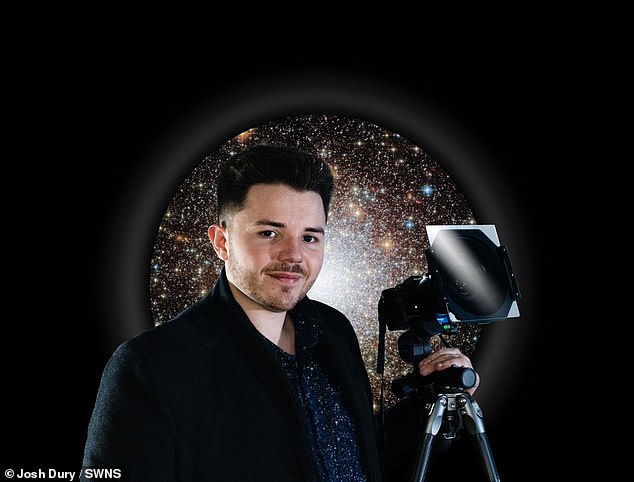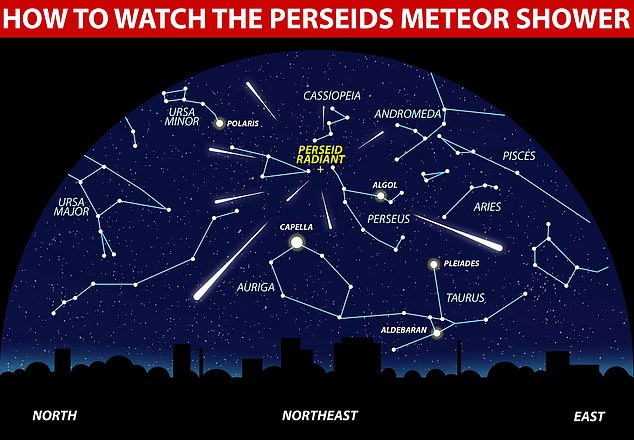Stunning photo made up of 43 separate images captures meteor shower over Stonehenge
Meteor fragments that lit up the sky around Stonehenge have been captured by a photographer using innovative camera techniques.
The incredible spectacle was photographed by Josh Dury of Compton Martin, who managed to combine 46 separate images of the Perseid meteor shower over the megalithic structure.
The 26-year-old astrophotographer said: ‘The composition creates a visual story of shooting stars ‘raining’ on Stonehenge.
‘This photo was taken over a three and a half hour period on Friday evening (August 9) from 10:30pm.’
This is happening because the Perseid meteor shower is reaching its peak this weekend, likely on Sunday night.
The stunning image combines 43 images of the Perseid meteors as they fell over Stonehenge, Wiltshire
The Perseids are a profuse meteor shower typically visible from mid-July to late August.
It passes through Earth’s atmosphere every year, as Earth orbits through the debris of Comet Swift-Tuttle.
The comet’s meteorites, usually no larger than a grain of sand, burn up as they hit Earth’s atmosphere at a speed of 58 kilometers per second, sending a brilliant beam of light shooting into the sky.
At the peak of the year, visitors can see up to 100 shooting stars every hour.
Temperatures can reach 1,648°C to 5,537°C when they reach the atmosphere.
The meteors are called Perseids because they appear to shoot out of the constellation Perseus.

The photo was taken by astrophotographer Josh Drury (pictured)

Stargazers in the UK will be among those able to enjoy the Perseid meteor shower, which occurs when the Earth ploughs through debris left behind by the Swift-Tuttle comet during its travels through the inner solar system
Although the peak is officially on the evening of August 12, it is worth looking out for a possible second peak, according to Daniel Brown, senior lecturer in astronomy at Nottingham Trent University.
He said: ‘The meteor shower builds slowly from mid-July, reaching its peak activity of 100 meteors per hour on August 12. Activity then declines until mid-August.
‘In reality, however, the activity may show a more complex variation, meaning the peak may not be the only one.
‘In 2018 and 2020, there was some increase in activity a day or two after the peak.
‘So in addition to the fact that meteor showers don’t happen once – they slowly build and then wane over days – we might see the most active evening followed by another one a day or two later.’
To fully enjoy the meteors, experts recommend avoiding well-lit and built-up areas and trying to find an unobstructed view.
Prof Brown said: ‘The best time this year during the main peak is the second half of the night, that is the early hours of August 13. Find a dark spot, away from direct light.’
He said it will take about 30 minutes for viewers to adjust to the darkness.
Prof Brown said: ‘Be patient and watch a large part of the sky, because meteors are visible everywhere.’
